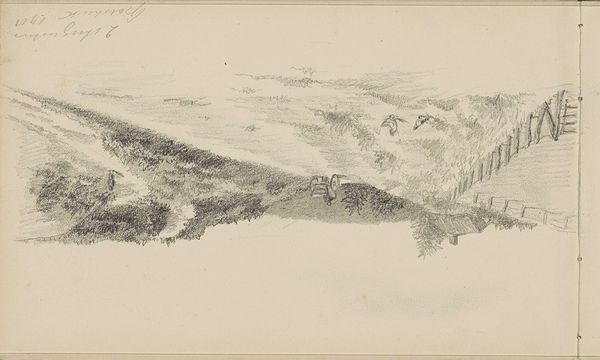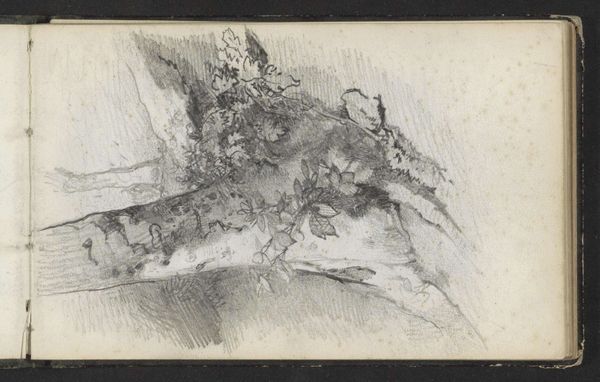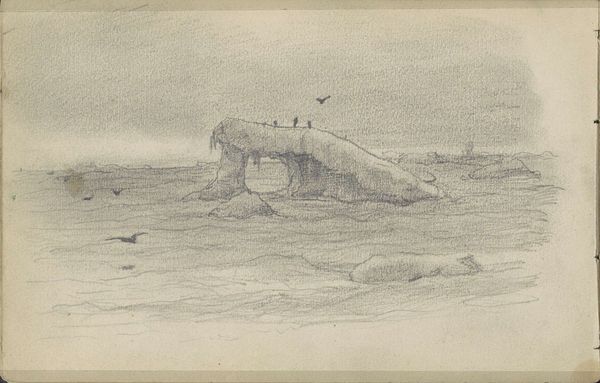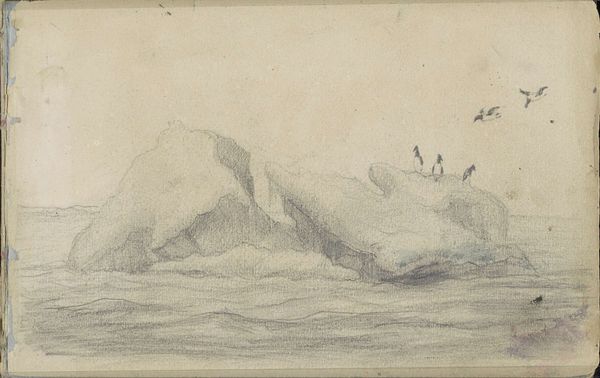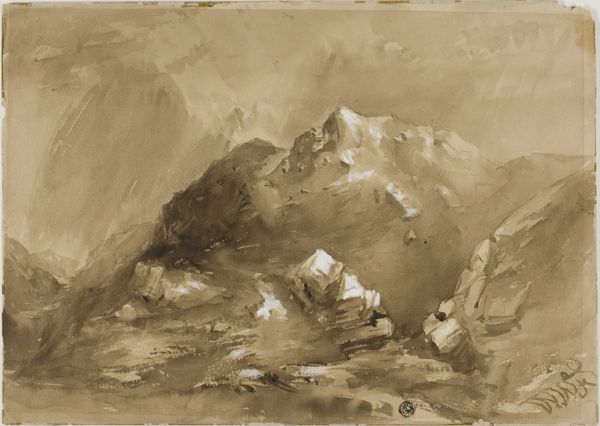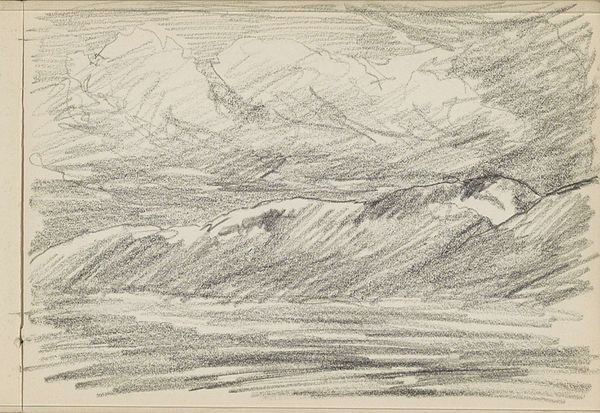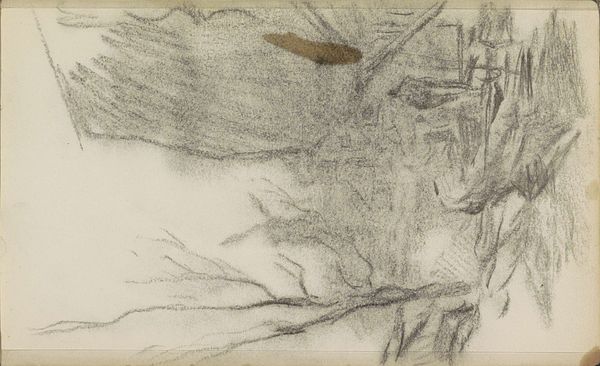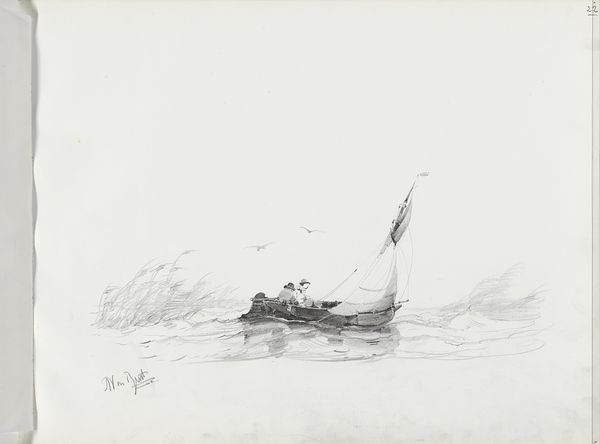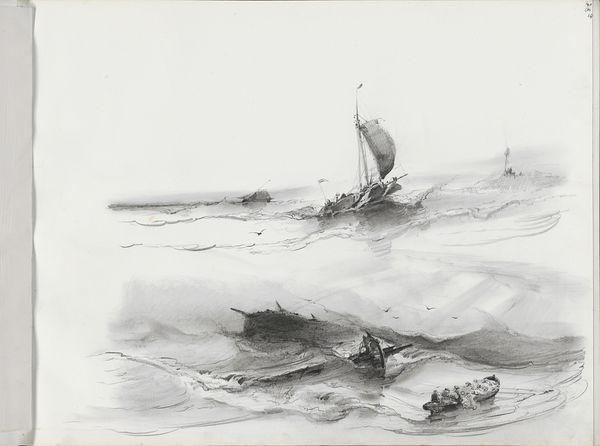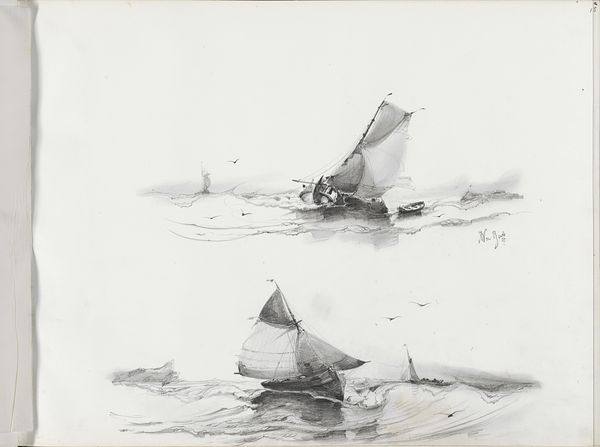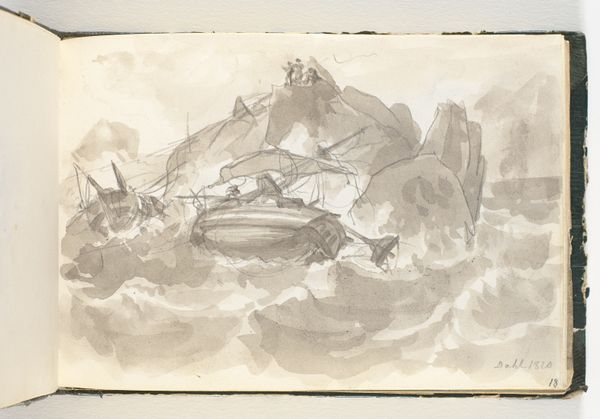
drawing, pencil
#
drawing
#
pencil sketch
#
landscape
#
romanticism
#
mountain
#
pencil
#
watercolor
Copyright: Rijks Museum: Open Domain
This is a pencil drawing by Albertus van Beest, titled "Eagle Flying over a Coast with Mountains." Dominating the composition is an eagle with outstretched wings, poised as if to fly off the page, it is rendered with carefully modulated tones to create a sense of depth and texture. The mountains in the backdrop are sketched with a lighter touch, their forms dissolve into the hazy distance. The relationship between the eagle and the landscape suggests a visual tension that enhances the drawing's emotional impact. Van Beest’s drawing uses aerial perspective, a technique favored by landscape artists of the time, to create an illusion of expansive space. The structure of the drawing, with its strong horizontal lines of the eagle’s wings, creates a sense of stability against the dramatic backdrop of mountains and skies. Note how Van Beest's compositional choice focuses on the eagle’s form, almost like a symbolic representation of freedom and dominance. It’s this interplay between realism and symbolic representation that makes the drawing a compelling example of 19th-century Dutch art, inviting us to reflect on the meanings of nature and national identity.
Comments
No comments
Be the first to comment and join the conversation on the ultimate creative platform.

